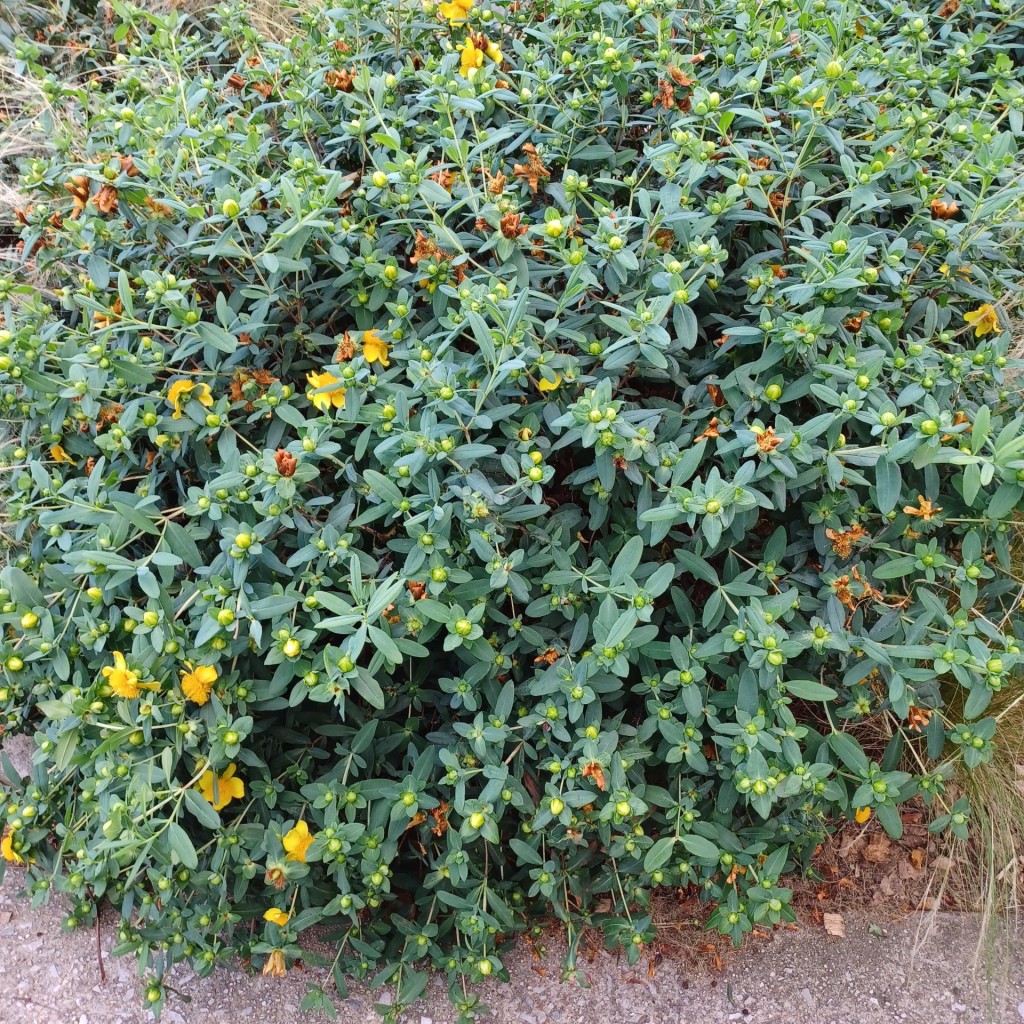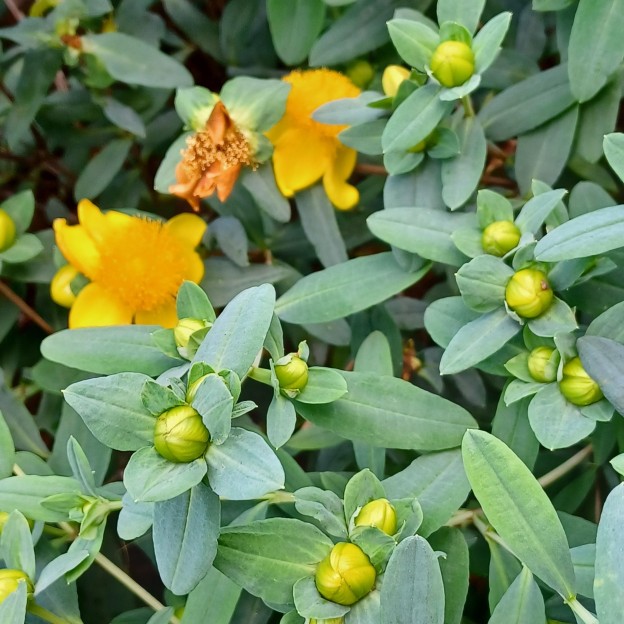Can a shrub be perfect? Shrubby St. John’s wort (Hypericum prolificum), now blooming in Takoma Park and native to the mid-Atlantic and Midwest, checks a lot of boxes.
First, it is well suited to the smaller lots characteristic of Takoma Park. It naturally forms a compact rounded shape and slowly grows to a maximum of four to five feet in height and four feet in diameter. Thus, the shrub can form a hedge or be planted between grasses and flowers. Since it blooms on new wood, it can be pruned several inches in early spring.
Shrubby St. John’s wort has cheerful yellow flowers from June through August. Some fine specimens are in bloom now in the right of way along Carroll Avenue between Park and Tulip avenues. It can provide visual interest in winter, too, when the bark on older stems peels away to reveal pale orange inner bark.

The shrub does well in either sunny or partly shaded locations and in clay soil. Moreover, once established, it can handle periods of drought.
Besides being well-behaved and winsome in the landscape, this shrub offers ecological benefits. Bees love its blossoms, and it hosts the caterpillars of several moths and butterflies. The flowers mature into seedpods that provide food for birds in the fall and winter.
And yes, it is deer resistant. The leaves and sap are mildly toxic, a fact that deer have figured out.
As for the name, the European cousins of shrubby St. John’s wort in the Hypericum genus “were apparently gathered and burned to ward off evil spirits on the eve of St. John’s Day,” according to the Missouri Botanical Garden database. This June 24 holiday also harkens to pagan celebrations of the summer solstice.
–Meg Voorhes
